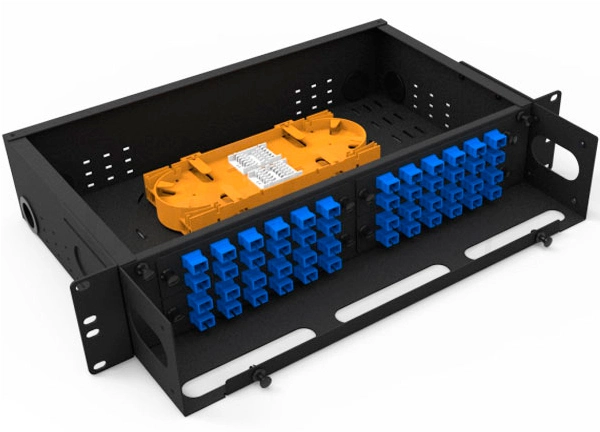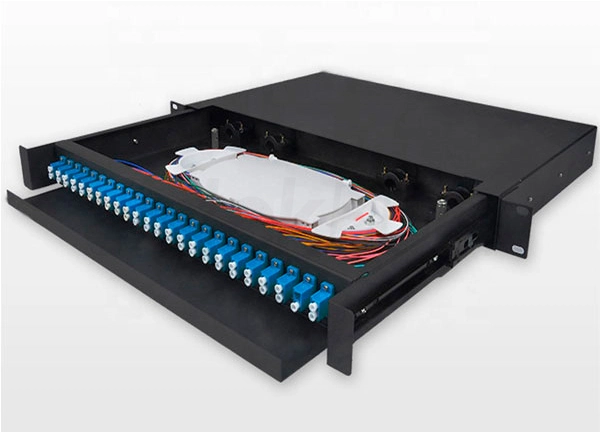
Optical transceiver modules play an indispensable role in data center operations. A good-quality optical transceiver module can ensure the flexible operation of the high-density optical fiber network, which provides convenience for subsequent management and expansion. How to choose correct optical module? In addition to looking for reliable module suppliers, you also need to understand market trends. In addition, the hardware quality, compatibility, pre-sales and after-sales service, and related technical support of the transceiver module are also important reference factors.
The History of Optical Module Development
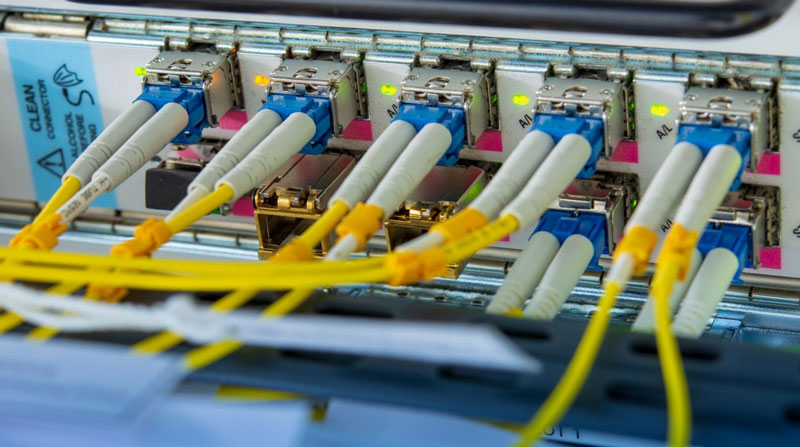
High-speed and high-efficiency networks are the goals that people are constantly pursuing. Therefore, the requirements of data centers are constantly increasing. In order to meet the needs of higher density and larger capacity, optical module continue to derive and develop. At present, there are many types of optical module products on the market. , The following lists several categories for your reference when purchasing.
lSFP: Supports multiple protocols and rates (Fast Ethernet, Gigabit Ethernet, Fibre Channel, Sonet/SDH), and can be used in commercial and industrial environments.
lSFP+: used for 10G Ethernet and 10G Fibre Channel.
lXFP: Support multiple 10Gbps protocols (Ethernet, Sonet/SDH, Fibre Channel).
lX2: Mainly used for Ethernet X2 port switch or router and network connection port.
lSFP28: Used for 25G Ethernet, especially for 5g prequel.
lQSFP+: It can achieve a transmission rate of 40Gbps, supports 40G Ethernet and optical transmission protocols, and can be used with single-multimode fiber jumpers.
lQSFP28: It can achieve a transmission rate of 100Gbps, supports 100G Ethernet and optical transmission protocols, and can be used with single multimode fiber jumpers.
What are high-quality optical transceiver modules?
When choosing networks and IT equipment, comparing prices is not enough. After finding an optical transceiver module that the device can adapt, the following points need to be considered: performance, compatibility, interoperability, pre-sales and after-sales service, and technical support.
Whether it conforms to the MSA multi-source protocol of the optical transceiver Module
Third-party modules, which provide more reliable compatibility at a lower price, have gradually been recognized by the market. Many users have also shifted their attention from the costly foundry modules to third-party modules. It is important to ensure that the optical transceiver module is compatible with existing equipment. The MSA standard specifies the interface and size of the module. According to this agreement, the module manufacturer can provide optical modules with the same functions as the original brand, while ensuring that the optical modules are compatible with a variety of original equipment. In the fierce market competition, many third-party optical modules can even exceed the original optical modules in terms of performance, reliability and warranty policies.
Whether it has DOM/DDM Function
DDM is digital diagnostic monitoring, its full name is Digital Diagnostic Monitoring. It is the technology used in the optical transceiver module so that users can monitor the real-time parameters of the optical transceiver module. These parameters include working temperature, working voltage, working current, transmitting and receiving optical power, etc., and can also display the factory information of the module and prompt alarms/warnings. DOM is digital optical monitoring, its full name is Digital Optical Monitoring. Its function is similar to DDM, allowing you to monitor all aspects of the optical transceiver module's data in real time, such as the optical module's transmission and reception, input and output power, temperature, and voltage. The network administrator can check the data to ensure that the optical optical module is working properly. A module often supports these two functions at the same time, providing a performance monitoring method for the system, which can help the system administrator to predict the life of the module, isolate the system failure, and verify the compatibility of the module during on-site installation.
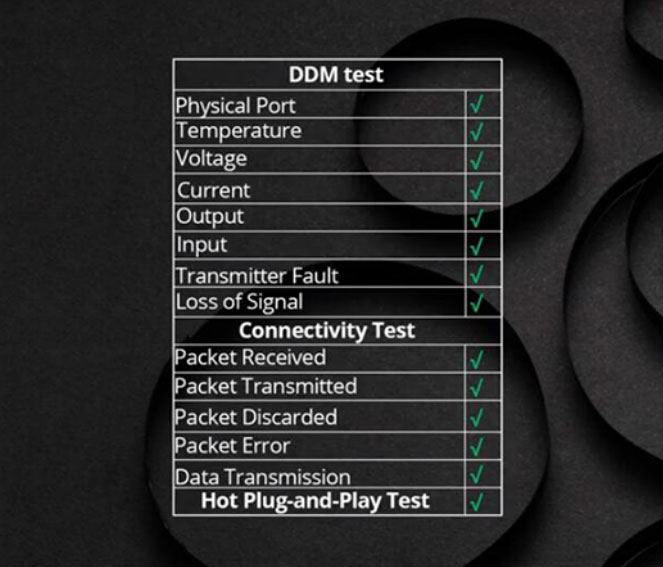
Strict Quality Control of Compatibility and Performance
Once the optical transceiver module fails, it is likely to cause a huge network failure. Large original equipment manufacturers should strictly control the quality of the modules during the module production process and conduct real machine tests and other operations. Ensure that the transceiver transceiver module has good quality, performance, and compatibility, and avoid network interruption to save time and cost. In addition, the transceiver module must also comply with some industry standards, such as MSA, IEC, ISO, etc. It is recommended to ask the supplier for relevant regulations before purchasing an optical transceiver module. The laser safety level of a qualified optical transceiver module can reach level 1, so that it will not hurt the eyes during installation/disassembly. At the same time, in order not to cause environmental pollution, the optical transceiver module should also pass RoHS certification.
Reliable Warranty Policy and Technical Service
Even if it is the original optical transceiver module of the big brand, it is difficult to guarantee that there will be no problems at all. The software and hardware of the data center are frequently upgraded. If you can have responsible after-sales service and reliable technical support, you are not afraid of compatibility problems with the modules on the new equipment. There are a large number of third-party suppliers focusing on optical modules in the market, and some promise lifetime warranty. Ideally, repairs or replacements are quick and the cost is very low. In the case of ensuring professionalism, the longer the after-sales and technical service period, the better.
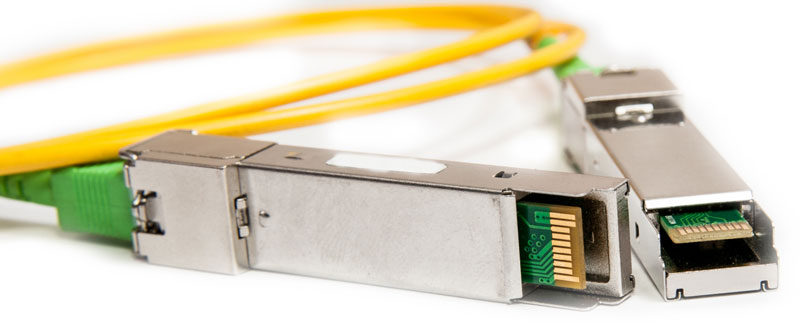
Price Advantage
The common optical transceiver transceiver modules on the market today have been put into use in large quantities and are used in many access applications, accounting for about 10% to 15% of network capital expenditures. Therefore, it is particularly important to control the cost per gigabit or the unit price of the module. A good optical transceiver can guarantee that you get what you pay for, and the saved budget can be invested in other projects, such as technological innovation, automated production, tool maintenance, etc., in order to maintain the competitiveness of the company and improve its performance.
Integrate with 5G new technology
Next-generation network-The fifth-generation (5G) wireless system is developing rapidly and has surpassed the existing 4G/LTE network. 5G has higher capacity and lower latency, supports higher density of mobile users, and lays a solid foundation for the Internet of Things. Therefore, both in terms of quality and quantity, the demand for high-speed 5G optical transceiver modules has been greatly increased. As for chips, optical modules based on silicon optical technology can meet the large bandwidth requirements of new 5G and IoT applications. Optical transceiver modules that have better heat resistance and can withstand harsh environments are expected to be deployed on a large scale in the 5G era. In order to avoid fiber depletion, 5G construction requires more fiber-saving optical transceiver.
Conclusion
When purchasing optical transceiver modules, high quality and low cost are constant pursuits. A wise approach is to choose a reliable and comprehensive third-party module supplier, and take into account the number of compatible brands, testing procedures, technical services, and customer reputation. UnitekFiber has a complete range of products and is favored by major data equipment manufacturers. The wide variety of optical transceiver modules and sufficient inventory provide you with flexibility while also saving costs. If you need any help, feel free to contact us sales@unitekfiber.com


